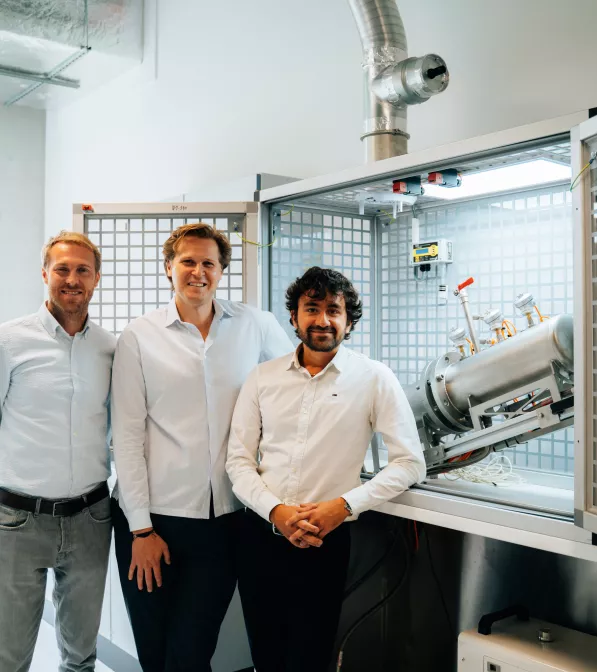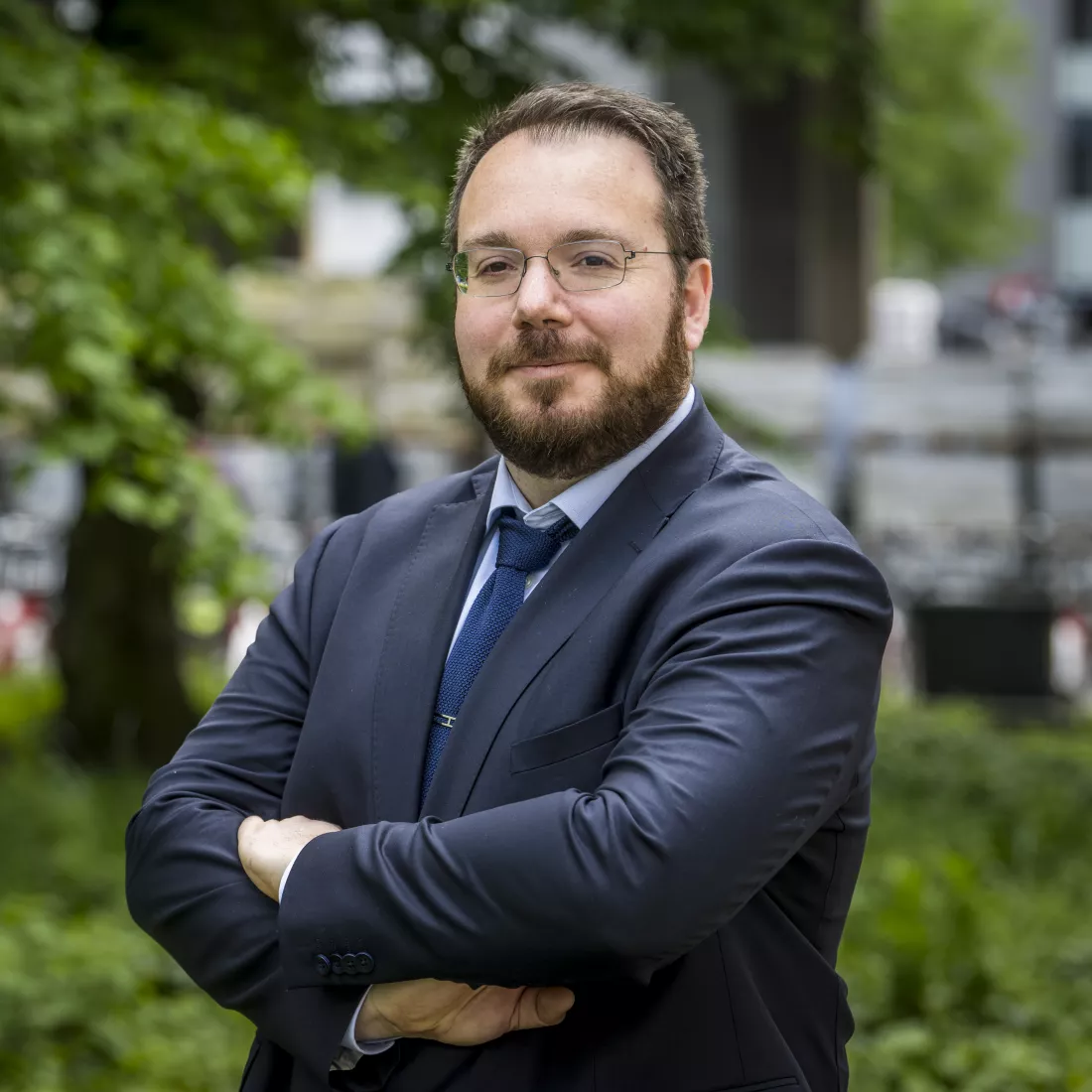© Victoriano Moreno

- Home
- Innovation powerhouse
- The business opportunities of ambitious climate plans
The business opportunities of ambitious climate plans
Ambitious climate plans lead the way
A future-proof city considers its environmental impact. The key to remaining an attractive, lively city in the future is a pleasant, healthy living environment and a reduction in carbon dioxide emissions. Antwerp’s Climate Plan envisages concrete measures, with a 50 to 55% reduction in CO2 emissions by 2030 and a climate-neutral city by 2050. This target is even more ambitious than what is required by European standards. Climate neutrality by 2050 is also an ambition for the Port of Antwerp-Bruges. However, it’s not only the government that is looking to the future. A recent survey from the European Investment Bank showed that 51% of Belgian companies are investing in measures to combat climate change. Belgium is the fourth-best country in Europe in this regard, a situation that gives rise to many opportunities for businesses.
In 2022, Antwerp was ranked 27th in Arcadis’ Global Sustainability Index, a jump of 16 places. Antwerp is doing exceptionally well, securing 8th place in the ‘Planet’ category, focusing on limiting emissions, sustainable (public) transport, energy consumption and energy efficiency.
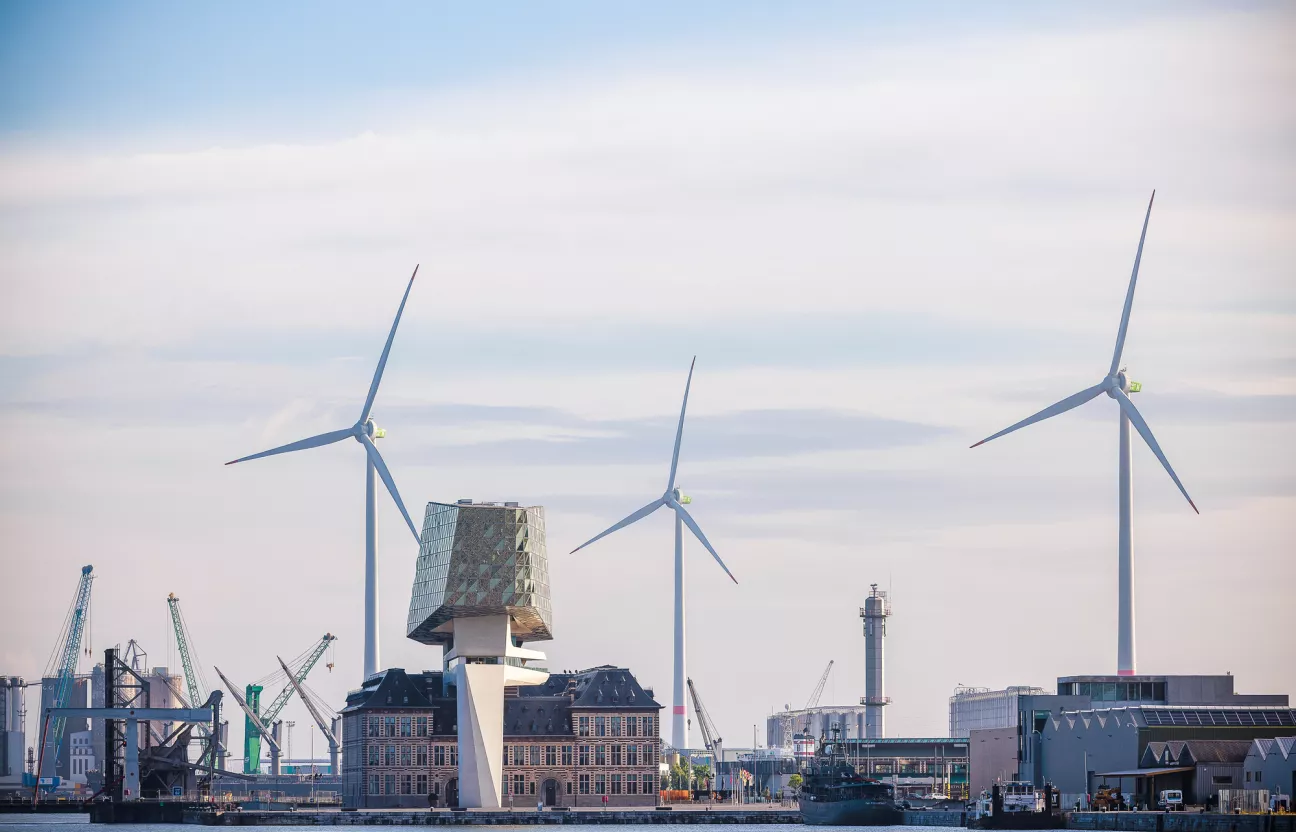
© Victoriano Moreno
Energy transition
The energy transition is a crucial element in tackling climate change. As an energy hub, the Port of Antwerp-Bruges is where this transition is taking place, with wind energy, solar energy, and residual heat all playing a role. A substantial onshore wind turbine park within the port is set to become the largest of its kind in Belgium. By harnessing the power of the wind, the port is able to generate clean, green electricity to supply the terminals, ships, and local residents. Leading chemical and energy companies in the Antwerp region are aiming to make a significant contribution towards climate objectives, with numerous trailblazing projects.
Carbon capture
Antwerp@C is an innovative 10-year project focused on CO2 reduction. A collaborative initiative, it aims to develop carbon capture technologies within the chemical and manufacturing sectors. Its goal is to facilitate partnerships between companies, research institutions, and governmental bodies to drive innovation and adoption of carbon capture. The objective is to capture and potentially liquefy 14 million tonnes of CO2, transporting it to old gas fields in the North Sea or by pipeline to the Netherlands. Captured CO2 will also be re-used in the long term. Antwerp@C will contribute to achieving a carbon-neutral port by 2030, reducing CO2 emissions by half.
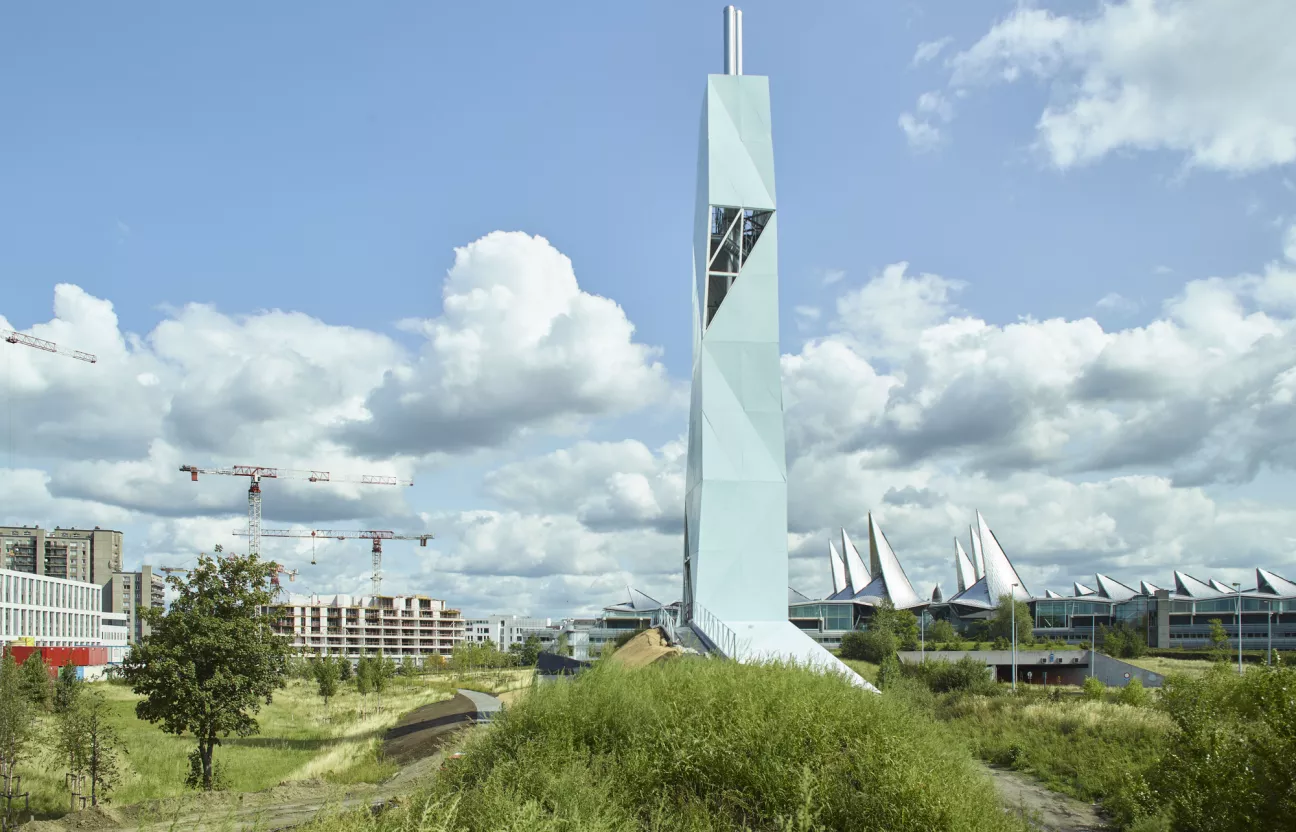
© Sepp Van Dun
Heat networks
The city is investing in heat networks in order to provide sustainable heating to as many buildings as possible. The first heat network is being developed in the new neighbourhood of ‘New South’. A second network will provide heating in the Antwerp North neighbourhood, using residual heat from industry in the port. This project demonstrates an intertwining of port and city. In the long run, this initiative will reduce CO2 emissions by 100,000 tonnes each year.
Hydrogen
Hydrogen will play an essential role in the mix of solutions to achieve climate ambitions, and the Port of Antwerp-Bruges is ready to become the hydrogen hub of Europe:
- In Antwerp’s Hydrogen Import Coalition, leading companies have pooled their experience and industrial know-how to study development of the hydrogen value chain.
- The Port of Antwerp-Bruges has the necessary infrastructure to receive and distribute hydrogen carriers, including docks, terminals and a pipeline network.
- The Port of Antwerp-Bruges is investing in new infrastructure, such as storage tanks, and installing hydrogen refuelling stations for various types of vehicles.
- Hydrogen- and methanol-powered tugboats are already operating in the port.
- The Antwerp company CMB has ordered 200 hydrogen-fuelled trucks.
- The City of Antwerp is investigating options for a hydrogen hub in the climate-neutral Blue Gate Antwerp business park.
- Hydrogen-related research is being conducted by Maritime Campus Antwerp and the University of Antwerp.
Antwerp wants to create a hydrogen ecosystem through partnerships and innovative projects, not only to reduce carbon emissions, but to also stimulate economic growth by creating job opportunities and attracting investment.
Circular economy
Another important part of combatting climate change is the transition to a circular economy. Transforming waste into new raw materials or energy is a top priority for the city and port. This recovery of waste produces a considerable cost advantage, reduces dependency on external economies and offers critical environmental benefits. Antwerp is home to a number of leading global companies, such as Indaver and Umicore. Indaver is investing €100 million in a recycling plant for polystyrene, a European first.
NextGen District is an industrial port site focusing on sustainable innovation, recycling, and waste recovery. Thanks to its proximity to Europe’s largest petrochemical cluster, NextGen District offers a competitive advantage for companies and includes NextGen Demo, a prime location for pioneers in this area, intended to serve as a testing ground for sustainable innovations that have outgrown the lab.
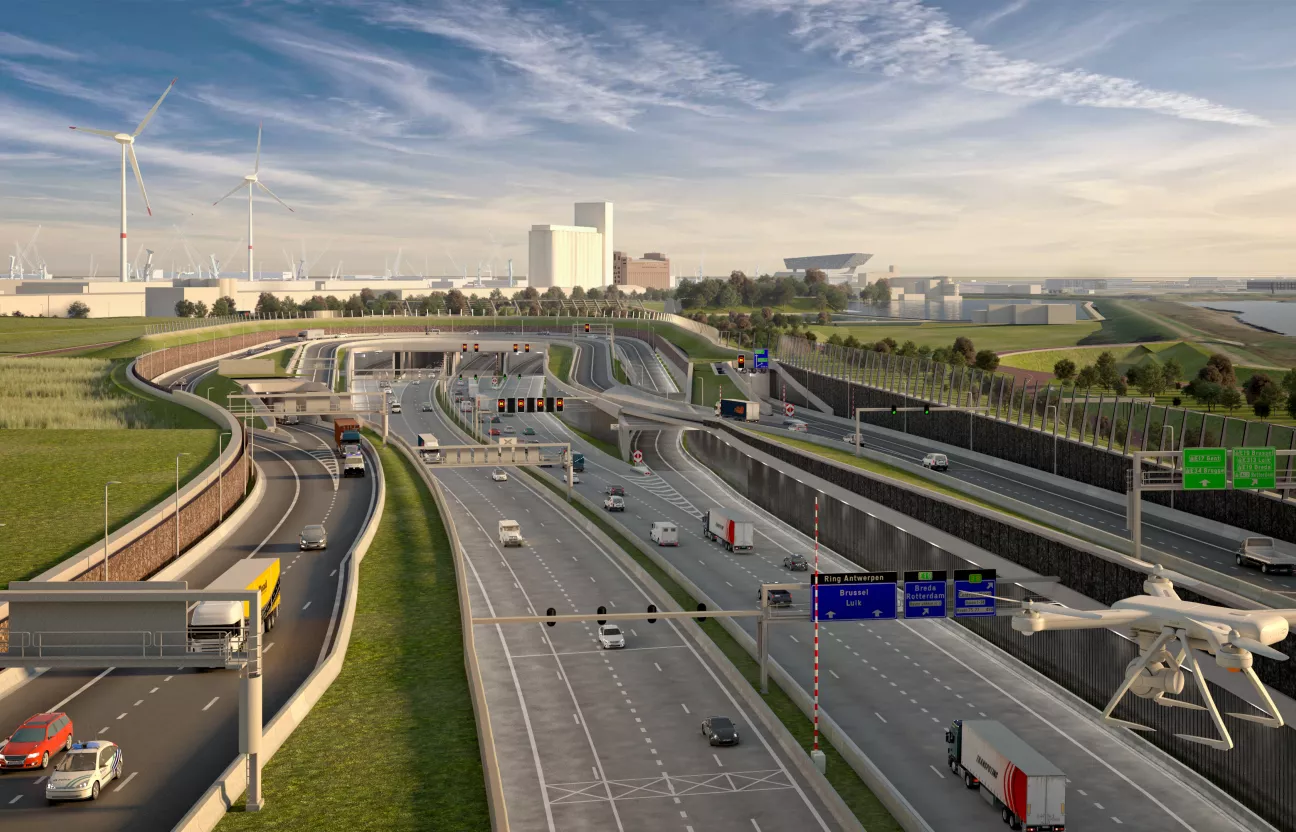
Mobility
Mobility in Antwerp is closely linked to infrastructure. The Big Link, the biggest infrastructure project in Europe, will complete the Antwerp Ring Road. This project will significantly improve traffic in and around Antwerp, strengthening the city’s position as a central logistics hub in Europe. The Big Link will also make the city more climate resilient, creating new green spaces and an ecological corridor. The areas surrounding the ring road will be used to integrate heat networks and for water management.
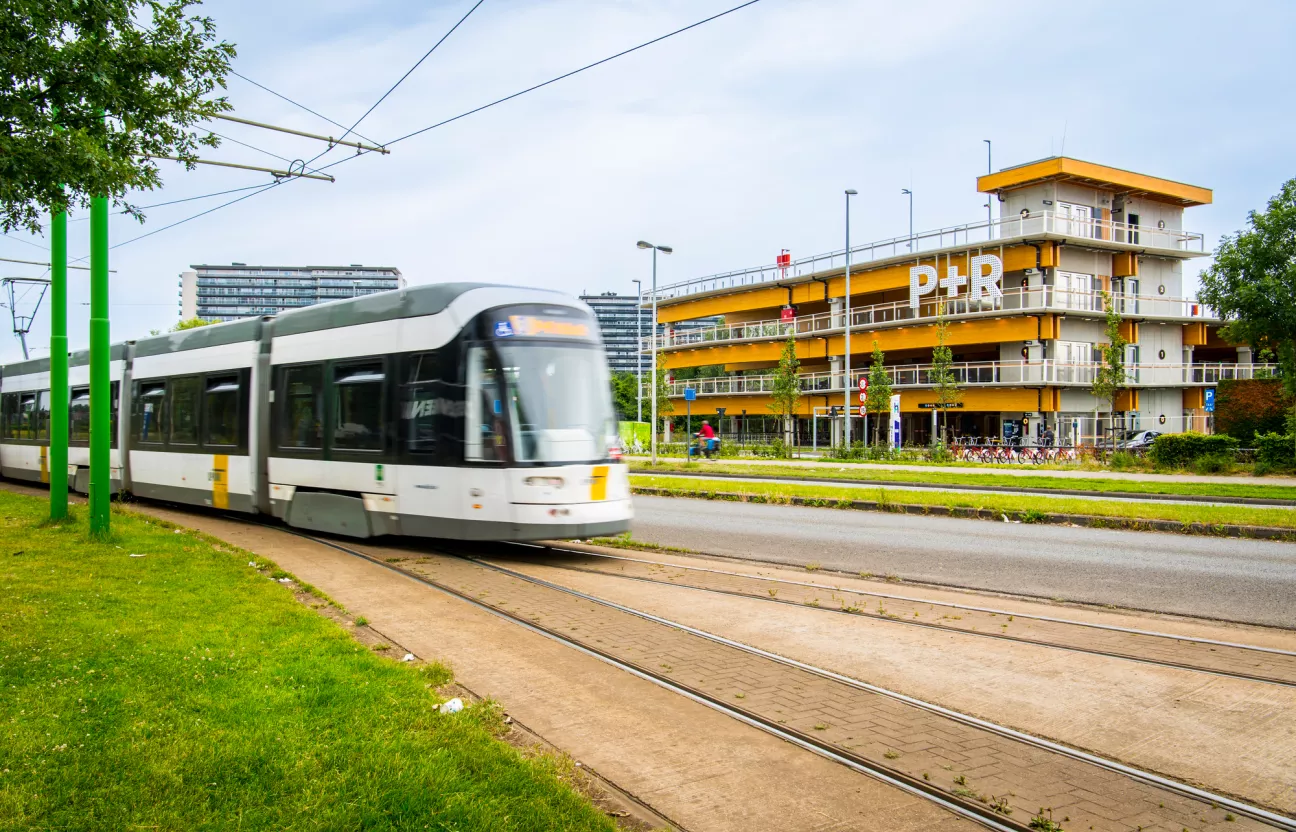
© Frederik Beyens
Smart mobility also has an important role to play in tackling climate challenges. Antwerp is focusing on several ‘Mobility as a Service’ products. The aim is to achieve a major modal and environmental shift in the city and the wider region. Antwerp is Belgium’s largest hub for mobility technology, with more than 25% of all companies providing mobility-related tech.
A drought- and heatwave-proof city
Water Plan
In the future, heavy rainfall and longer periods of drought will occur more frequently. To prepare for this, the city of Antwerp has created a Water Plan, aiming to reintegrate water into the city and raise water awareness among the residents of Antwerp. The Plan aims to prevent flooding and make the city more beautiful, pleasant, and cooler in the summer. A good example is the South docks. Once a drab square full of parked cars, today it is being transformed into a new park with rain gardens, wadis, mirror ponds and an emergency water buffer. Rainwater will be stored and used to irrigate green spaces and clean vehicles and purified to make it drinkable for use in surrounding buildings.
Raising the river banks
The renewal of the seven-kilometre-long historic waterfront in the city centre is a major undertaking. This project is not only about improving the urban landscape on the right bank of the city, but also incorporates flood dykes and large new public spaces. The project started in 2010 and will be completed by 2030. Future work will focus on Linkeroever (the left bank), with the raising of the height of the river bank and the creation of a new, green pedestrian promenade. This project combines a unique blend of infrastructure, architecture, and public spaces where people can stroll, exercise, and unwind. The project has been selected as a pilot for a European subsidy programme concerning climate change. In this way, the left bank is serving as a lab for future sustainability projects.
